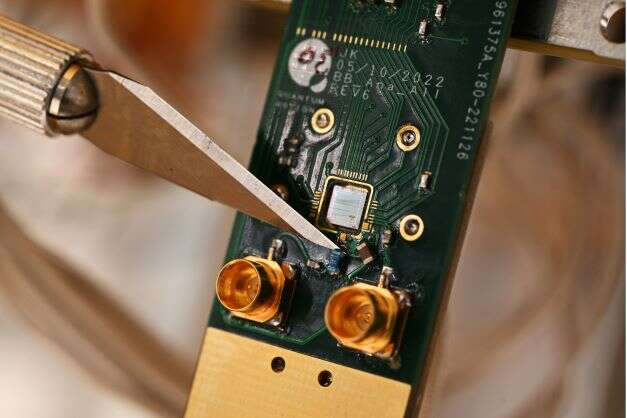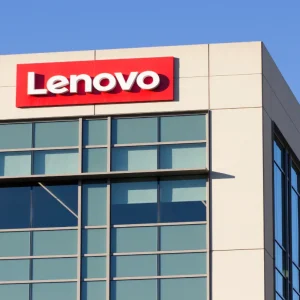
British quantum computing start-up Quantum Motion has completed a £42m funding round led by Bosch, Porsche and UK government-backed fund British Patient Capital. The company’s CEO told Tech Monitor the money would help it build-out its silicon-based quantum processor.

The goal, says James Palles-Dimmock, is to create an end product that can be sold to hyperscalers or other data centre operators, much like companies such as Nvidia do with AWS and the other cloud hyperscalers. He says his company’s final product will be able to fit inside a 19-inch server rack including full cooling.
“You have to look at companies like Nvidia, they don’t decide to start up a massive server centre and compete with AWS, they sell what they do really well to AWS who then provide a computer to the customer and so we will have the same sort of model,” Quantum Motion CEO Palles-Dimmock says. “I don’t want to waste my teams’ efforts in trying to rejig what AWS, Alibaba et al have done really well. I would rather work non-exclusively with anybody who can provide that service.”
Quantum Motion was founded in 2017 by professors John Morton and Simon Benjamin, from University College London and Oxford University respectively, to use established silicon processing to create new quantum computing architectures. It has raised £42m from a combination of specialist quantum investors and technology companies. The money will allow them to accelerate development of silicon quantum processors through deeper manufacturing ties and recruitment.
The founders have published several peer-reviewed papers underlying ways silicon can provide the most cost-effective and scalable way of producing millions of qubits, the level thought to be required to reach quantum advantage and create a fault-tolerant, fully functional quantum computer. This includes the design of validated integrated circuits that are capable of generating, routing and processing signals at deep cryogenic temperatures to a few tenths of a degree above absolute zero.
Quantum Motion: thousands of multiplexed quantum dots
Palles-Dimmock says the company has demonstrated the potential to have thousands of multiplexed quantum dots fabricated in a tier-one foundry. “We are incredibly blessed with silicon, it is the most pure substance mankind has and we’ve done very well at purifying it for the chip industry and that magnetic purity ensures it delivers the best solid-state qubits that exist so that is one big tick,” he says.
“The fundamental starting point of the company was that these other companies are fantastic, they are delivering individual qubits but some of these qubits are large, and we know we need millions of these qubits to do something useful. Instead, we said, let’s see what we can make millions of; that is transistors. We need to do that at a high yield and do so in a small form factor.”
Then, Palles-Dimmock believes, the company can derive benefits from silicon by putting together hundreds of very small cores in what is called a multi-core NISQ. “You can put small individual quantum elements together and use all of the benefits you get from silicon, DACs, multiplexes etc on the same chip,” he says.
Rather than promising 100, 1,000 or 10,000 qubits, Quantum Motion is focusing on the building blocks of quantum computers. “We are building something that is more like the RGB pixels of a TV,” explains Palles-Dimmock. “Once you get the individual pixel correct, what is stopping you from having an 8K TV? There is no difference between an 8K, 4K or 1080p or whatever, it is just more pixels of the same boring puzzle being repeatedly tiled.”
This building block approach to quantum computing also allows the company to take a more need-based approach to reaching quantum advantage – the point where it is more viable to use a quantum computer for a task than a classical high-performance machine.
“The reality is nobody knows in the NISQ era when there will be any utility or commercial advantage in a quantum computer,” said Palles-Dimmock. “We know there will be a commercial advantage when we have a large-scale fault-tolerant quantum computer but until we have those early use cases nailed down and paying commercial customers, not just someone toying about with it, then to me it isn’t a commercial product.”
Quantum Motion working with existing HPC users
Quantum Motion starts by working directly with a company that makes heavy use of high-performance computing. They discuss how that computing power is being used and then determine what it would cost to build a quantum architecture to meet those needs. If the cost is higher than their return on investment then it isn’t commercially viable.
“That is why it is difficult to say commercial advantage until you can say how much it is going to cost you to provide that architecture, and that is what we are doing now. If you are going to help end users solve their challenges, then you have to understand what those challenges are,” Palles-Dimmock explains.
The biggest challenge, and one the company’s team hopes to use the funding to solve, is a lack of skilled workers capable of designing integrated circuits or quantum theorists. “The more great quantum hardware engineers I can attract into the company the more successful we will become,” says Palles-Dimmock.
Today’s news means Quantum Motion is the latest quantum computing company to raise significant capital this year, following in the footsteps of the likes of Pasqal and Oxford Ionics.
Ekaterina Almasque, general partner at early-stage venture capital company OpenOcean, says: “Quantum computing was one of the few areas of tech that saw increased funding in 2022 compared to 2021, with notable raises like IQM’s €128m Series A.
“Quantum Motion’s latest round shows that the ‘quantum winter’ predicted by some is not materialising. In fact, quantum remains a thriving area of tech, with surging interest from investors and industry partners in backing its continued development. It also sends a strong signal that the UK quantum sector is in robust health, with Quantum Motion joining an ecosystem full of category leaders in centres of excellence like London, Oxford, and Cambridge.”
She said the silicon-based quantum computer developed by Quantum Motion is interesting but there are important challenges yet to overcome. “I am confident that quantum start-ups and their partners in industry have what it takes to rise to the challenge over the next decade and beyond,” she says.






